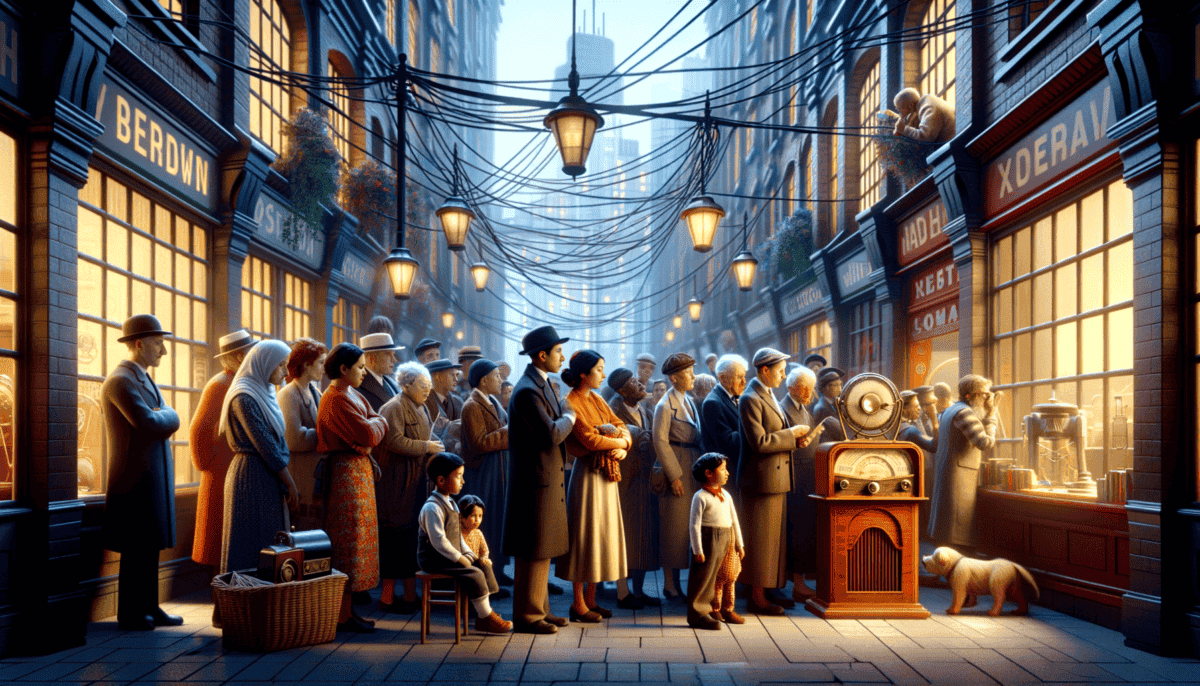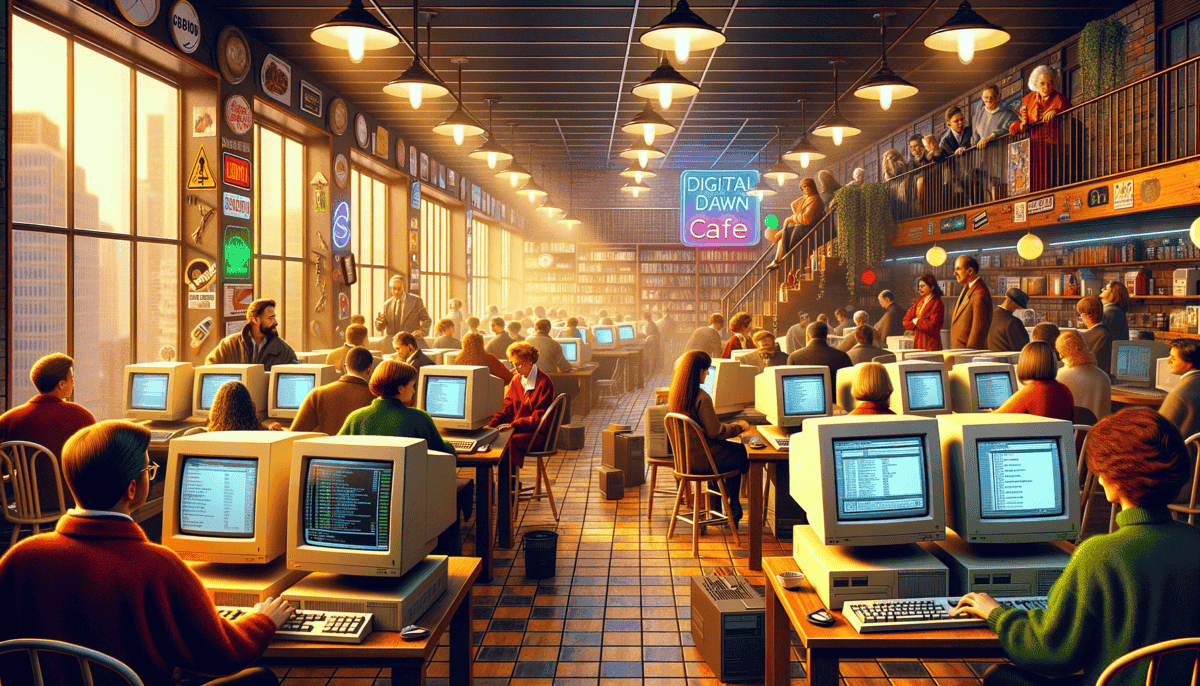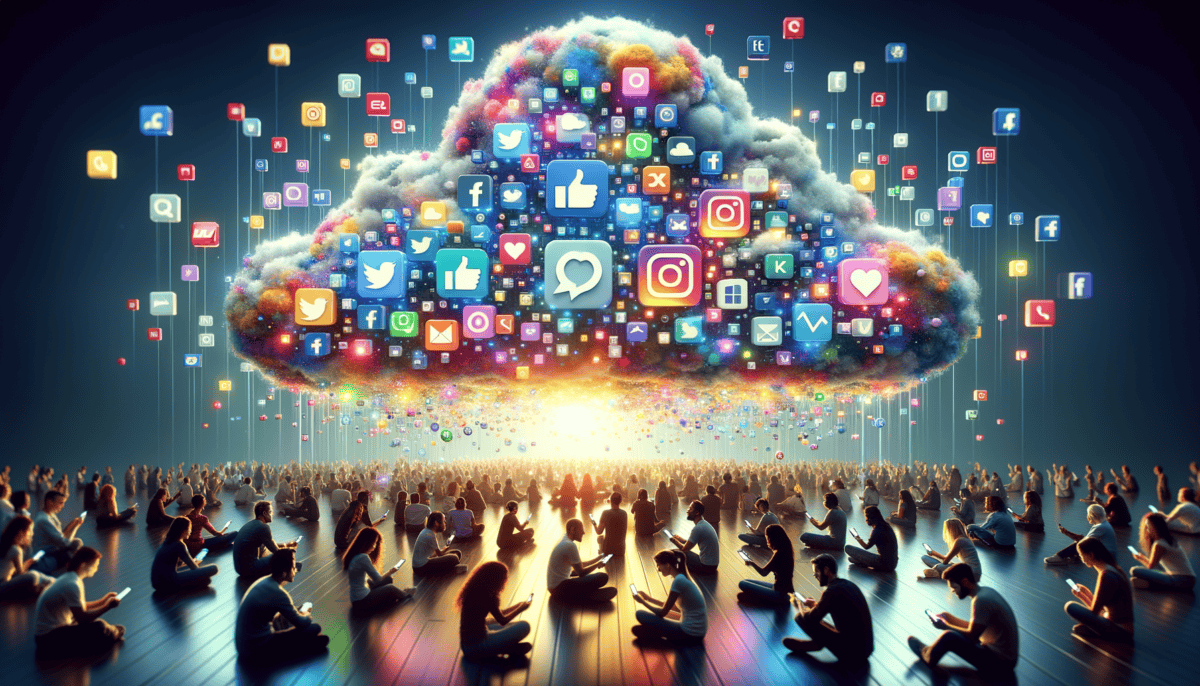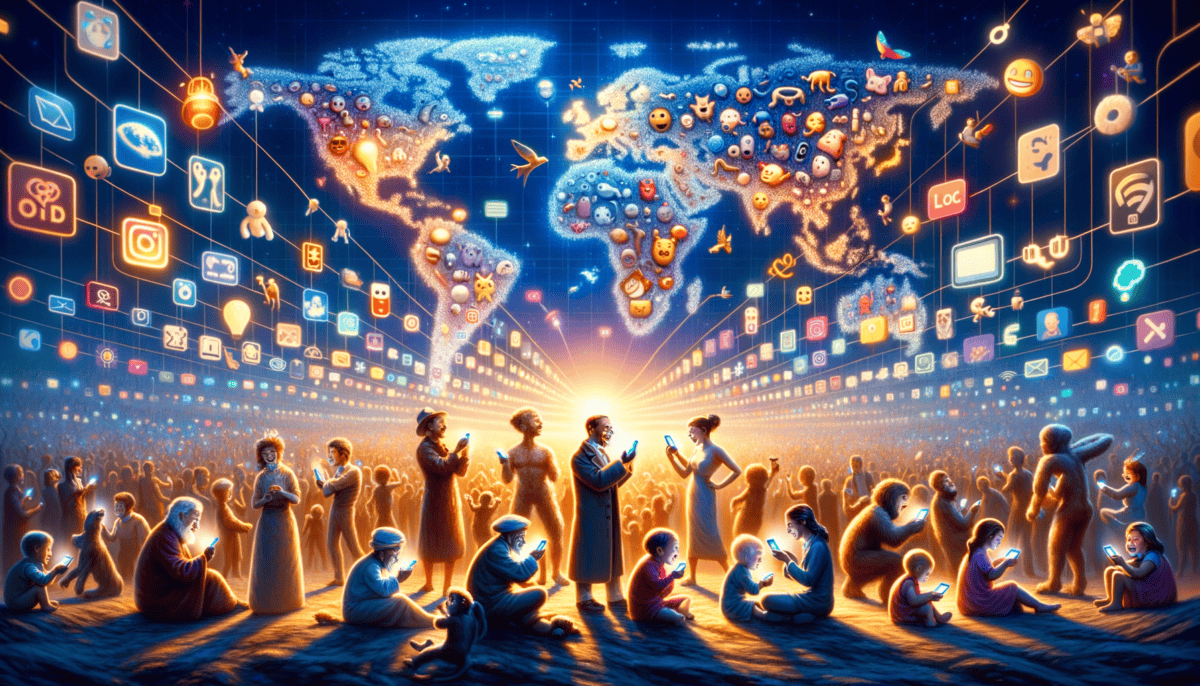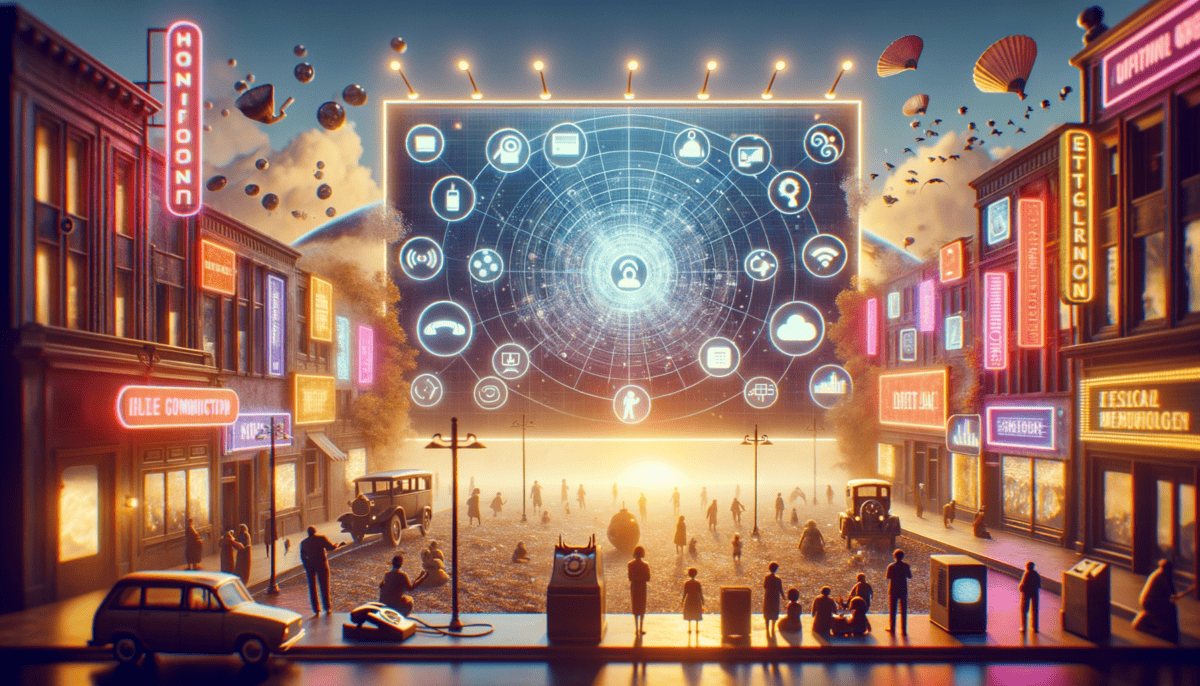The Spark of Connection
On a sunny day in 1844, Samuel Morse sat at his special machine in Washington, D.C. He was about to do something amazing! His fingers tapped on a strange device that made dots and dashes. These little sounds would travel on wires all the way to Baltimore.
“What hath God wrought?” Morse tapped out. These were the first words ever sent far away through wires! It was like magic.
The telegraph was like a super-fast letter sender. Instead of waiting days for a message, people could talk to each other right away! It worked like this:
- Someone would tap dots and dashes on a machine
- The taps would travel through long wires ⚡
- Another machine would make the same sounds far away
- Someone would write down what the sounds meant ✍️
A young telegraph operator named Tommy sat at his desk, listening carefully to the sounds. Tap-tap… tap… tap-tap-tap. “There’s a train coming!” he called out excitedly. “It will be here in one hour!”
More and more telegraph wires went up all over America. They were like a big spider web connecting cities and towns. People could send important news, say hello to family, or warn others about bad weather.
Soon, telegraph wires went under the ocean! Now people could send messages to other countries. A message that once took weeks by boat could now arrive in minutes. It was the first time in history that people could talk to each other so quickly across such long distances.
“The telegraph brought the world closer together. It was the beginning of fast communication, just like we have today with phones and computers!” – History books tell us
People were amazed by this new way to talk to each other. Business people could make deals faster. Families could hear news from far away. Newspapers could share stories from other cities right away!
The telegraph changed how people thought about distance. Even if someone was far away, their words could be near. It was the first step toward the world we know today, where we can easily talk to anyone, anywhere, anytime!
Little did Samuel Morse know that his dots and dashes would start something big. His invention was the first spark that would grow into the huge world of social media we have today. Those simple beeps and taps opened the door to a whole new way of connecting with people.
The story of how we talk to each other was just beginning. New inventions would come along that would make sending messages even easier and faster. But it all started with Morse and his clever way of turning letters into dots and dashes.
Voices Across Waves
Ring, ring! Something amazing happened in 1876. Alexander Graham Bell made the first telephone call! “Mr. Watson, come here, I want to see you!” he said. His friend in the next room could hear his voice through a wire!
Soon, telephone poles started popping up everywhere. Long wires stretched between houses and buildings. It was like a giant game of telephone, but this time the message came through clearly!
Little Sally jumped with joy when her family got their first phone. “Hello? Hello?” she giggled into the receiver. “Grandma, I can hear you! It’s like you’re right here!”
But an even bigger surprise was coming. In the early 1900s, something magical happened. People found a way to send voices through the air – without any wires! This was called radio.
“Radio waves travel through the air like invisible magic. They carry music, stories, and news to people everywhere!” – Radio announcer, 1920
Families would gather around their radio sets in the evening. They listened to:
- Music shows
- Funny stories
- News reports
- Sports games ⚾
Radio was special because lots of people could hear the same thing at the same time. If something important happened, everyone could learn about it right away!
Tommy loved listening to radio adventure shows after school. “Shh!” he would tell his little sister. “The Shadow is about to catch the bad guys!” Their imaginations would paint pictures of the exciting stories they heard.
Telephones and radios changed how people stayed in touch. You could:
✨ Call your friend just to say hi
✨ Listen to music from far away cities
✨ Hear news as it happened
✨ Share stories with lots of people at once
These inventions made the world feel smaller. A farmer in Kansas could hear the same radio show as a banker in New York City. A grandmother in Chicago could talk to her grandchildren in Los Angeles.
It was getting easier and easier to share information with more people. Voices could travel across cities, countries, and even oceans!
But this was just the beginning. Soon, new ways to connect would come along. People would be able to see each other while they talked, share pictures instantly, and talk to many friends at once.
The telephone and radio were big steps forward. They showed that distance didn’t have to keep people apart. Friends and families could stay close, even when they were far away. News and stories could reach everyone, everywhere.
Each new invention helped people connect in better ways. The dots and dashes of the telegraph became voice calls on the telephone. Single messages became radio shows for millions. What would come next? The world of communication kept growing and changing!
The Digital Dawn
Beep! Beep! Boop! ️ In the 1960s, something incredible started happening. Scientists were building a new way to share information – the internet!
Little Jimmy sat at his dad’s computer in 1995. “What’s that sound?” he asked, hearing the funny noises of a dial-up connection. “That’s the sound of the internet saying hello!” his dad explained.
Soon, people started using something called “chat rooms.” These were special places on the internet where you could type messages to other people. It was like passing notes in class, but to friends all over the world!
“OMG! I just made a friend in Australia through the internet!” – Sarah, 12 years old, typing in her first chat room
The internet gave us new ways to talk to each other:
- Email – like sending a letter, but it arrives in seconds! ✉️
- Instant Messages – chat with friends right away
- Forums – talk about your favorite things with other fans
- Websites – share information with everyone
In 1997, a special website called “Six Degrees” started. It was one of the first social networks! You could:
Make a profile about yourself
Connect with your friends
Find new friends through your friends
Share updates about your life
Then came Friendster in 2002. It was like a digital playground where you could:
Show pictures of yourself
Write messages on friends’ pages
Play games together
Meet friends of friends
Maria loved using Friendster to stay in touch with her cousins who moved away. “Look, Mom!” she’d say. “I can see the pictures from Juan’s birthday party even though we couldn’t be there!”
The internet was changing how we shared our lives with others. Instead of just talking on the phone or listening to the radio, now we could:
✨ Share pictures instantly
✨ Write stories for everyone to see
✨ Find people who liked the same things
✨ Stay connected all day long
These early social networks were like tiny seeds that would grow into something huge. More and more people started joining online communities. The internet was becoming a place where everyone could have a voice.
Tommy’s dad remembered the old days of telegrams and phone calls. “Now,” he said, “it’s like having a whole world of friends in your pocket!”
But the biggest changes were still to come. New websites would soon appear that would change how we connect forever. The digital world was just getting started, and it was about to get even more exciting!
The Social Media Revolution
In 2004, a college student named Mark Zuckerberg had a big idea. He made a website called Facebook that would change how we talk to friends forever!
Little Sarah watched her older sister make her first Facebook profile. “What are you doing?” she asked. “I’m connecting with my friends online!” her sister smiled. “We can share photos and talk whenever we want!”
Facebook made it super easy to:
- Share pictures of your day
- Tell friends what you’re doing
- Play fun games together
- Stay close to family far away
Then came Twitter in 2006! It was like passing quick notes to the whole world. People could share their thoughts in short messages called “tweets.”
“I just saw a rainbow! #Beautiful” – Tommy’s first tweet
But something was missing. People wanted to share more pictures! That’s when Instagram came along in 2010.
Instagram let people:
Make their photos look pretty with filters
Share moments instantly
❤️ Like and comment on friends’ pictures
Make short videos
Maria loved using Instagram to show her art. “Now everyone can see what I create!” she said excitedly. Her drawings got likes from people all around the world!
These new social media sites changed how we:
Make friends across the world
Learn new things
Share music and videos
Show our creativity
Even businesses started using social media! Local shops could tell everyone about their sales. Musicians could share their songs. Teachers could help students learn.
Jimmy’s mom used Facebook to find her old school friends. “It’s like a class reunion every day!” she laughed.
Social media also helped during hard times. When storms hit, people used Twitter to ask for help. When friends moved away, Instagram helped them stay close.
Remember these big changes:
✨ Anyone could share their story
✨ Friends could stay connected always
✨ News traveled faster than ever
✨ The world became more connected
But social media wasn’t done growing. New ways to share and connect were coming. People started making funny pictures called memes, and they spread faster than anyone could imagine!
The Meme Generation
Something fun and amazing happened as more people joined social media. They started sharing funny pictures with words on them. These became known as memes!
Little Joey saw a picture of a grumpy cat on his sister’s phone. “Why is that cat so mad?” he asked. His sister laughed, “That’s Grumpy Cat! She’s one of the most famous memes ever!”
Memes became like a new way to talk. Instead of just words, people used:
- Funny pictures
- Short videos
- Silly jokes
- Dancing challenges
“My homework ate my dog!” – A popular meme that made everyone giggle
New apps like TikTok made sharing fun videos super easy! Kids and grown-ups started making dancing videos, funny skits, and sharing them with the world.
Emma loved making TikTok videos with her friends. “It’s like having a tiny TV show!” she said. Her dance to a popular song got thousands of likes!
Memes helped people share:
Feelings
Jokes
Music
Creativity
Even teachers started using memes in class! Ms. Johnson showed a math meme, and suddenly division seemed funnier. Learning became more fun!
Social media became filled with new ways to share:
Stories that disappear after a day
Short funny videos
Challenges that everyone tries
Live videos where people can watch you right now
Tommy made a video of his pet hamster doing tricks. “Look, now Hamilton is famous!” he told his mom as the video got more and more views.
Big changes in how we talk online:
✨ Pictures said more than words
✨ Videos became tiny stories
✨ Everyone could be creative
✨ Fun spread faster than ever
But with all these new ways to share came new questions. How much sharing was too much? What about being safe online? The world of social media kept changing, and new challenges were coming.
As phones got smarter and internet got faster, people wondered what would come next. Would we have floating screens like in movies? Would we talk to holograms of our friends? The future of staying connected looked exciting!
The Future of Connection
As we zoom into today’s world, amazing new ways to connect keep popping up! Let’s peek into what’s happening now and what might come tomorrow!
Little Sarah tried on her uncle’s virtual reality headset for the first time. “I can see my friend Amy’s cartoon version, and we’re playing in space!” she giggled.
New technology is changing how we talk to friends:
- Virtual reality hangouts
- Holograms that pop up from phones
- Smart watches that send heartbeat messages
- Rooms that feel like you’re somewhere else
Marcus waved his hand in the air, drawing a glowing picture that his friend could see through special glasses. “It’s like magic!” he said. ✨
New ways we might talk to friends soon:
3D video calls that feel real
Playing games in pretend worlds together
Drawing in the air for others to see
️ Talking to computer friends that seem real
“Remember when phones were just for calling? Now they’re like magic wands!” – Mr. Rodriguez, Technology Teacher
But with all these exciting changes, some things stay the same. People still want to:
❤️ Share happy moments
Feel close to friends and family
Learn about the world
Have fun together
From Samuel Morse’s dots and dashes to today’s floating pictures, we’ve come so far! But the most important thing hasn’t changed – people love to connect and share with each other.
As we look ahead, we can dream big! Maybe one day we’ll:
Talk to friends on Mars
Share feelings without words
Play in virtual parks together
⭐ Make new friends all over the universe
The story of how we talk to each other keeps getting better. From simple beeps to magical virtual worlds, we keep finding new ways to share our stories, dreams, and smiles. And the best part? This story isn’t over – it’s just beginning!
So what will you create? How will you connect? The future is waiting for your ideas! ✨


